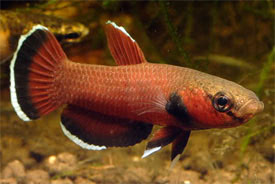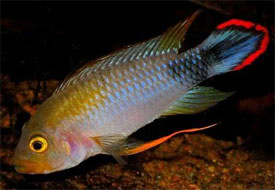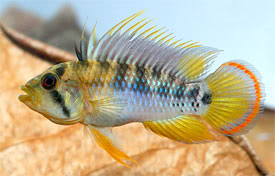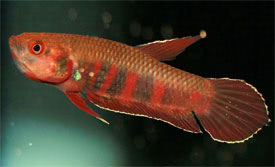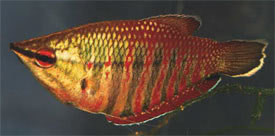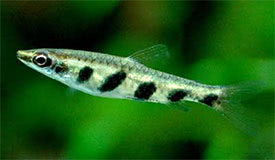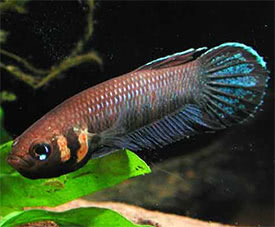
 Magyarul / Hungarian
Magyarul / Hungarian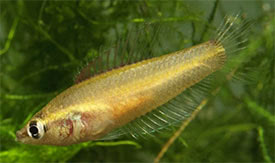
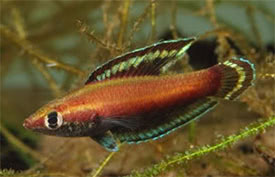
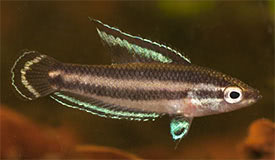


- Scientific name: Parosphromenus nagyi
- Synonyms: -
- Common name: Nagy’s Gourami
- Group: Labyrinth fishes
- Habitat: Asia; a small area of Peninsular Malaysia’s eastern coast.
- Size: 3-3,5 cm
- Biotope: Found in peat swamp forests and streams, which are characteristically black waters because of the rotting leaves and humic acids from decaying organic material.
- Social behavior: Not recommended for a community tank. Because of its small size, it can be combined only with small cyprinids, but it is best to keep them in a small group or in pairs.
- Diet: Carnivorous, a micropredator in the wild, so give them a variety of small live foods, such as daphnia, mosquito larvae and grindal worm in the aquarium. Frozen foods are sometimes accepted, but dried foods are usually refused.
- Breeding: Quite hard
- Tank: Minimum 40 litres
- Population: 1 pair for 40 litres
- Decoration: The require a dimly lit tank with sandy bottom, and plenty of aquatic plants and some roots that provide a lot of hiding places. Many breeders prefer an aquarium without substrate, because of the easier maintenance. The addition of dried leaf litter will stain the water, and will make the fish more confortable.
- Temperature: 22-28 °C
- pH: 3-6.5
- Hardness: 0-4 NK°
- Lifespan: 3-5 years
Description: Parosphromenus nagyi named for Peter Nagy who first brought the fish to Europe in 1979. Most of their original habitats have been destroyed, because of deforestation and other human activity. In most cases they now survive in heavily-modified peat swamp habitats such as irrigation ditches and roadside canals. Males have a black band bordered on both sides by bluish iridescent bands on their dorsal, anal and caudal fins. The inner blue band is significantly thicker. The pelvic fins are iridescent emerald green with a dark blotch at the base. During spawning the males develop more intense colors, the upper part of their body becomes reddish-brown, while the lower part becomes much darker, almost black. Females are less colorful and the blue bands on their fins are absent. During spawning the females take on a pale, yellowish color pattern. Both sexes exhibit an oblique dark bar running through their eye, and they can change their coloration rapidly depending on their mood, for example they become darker when aggressive. Parosphromenus nagyi has some color forms, which are named after their collection place, and can be easily distinguished by the male’s eye-catching band in the tail: in the Kuantan from the band is white, in the Cherating form the band is blue, while the Nenasi form the band is significantly less broad.
In the nature the fish spawns in small caves or among leaf litter where male and female forms a temporary pair and the male takes care of the eggs and fry. Mature males form a small territory around a cave that formed from leaf litter in nature. In the aquarium this cave can be a clay pot, a clay pipe, or any similar object where the male tries to attract the female. Some males construct a bubble nest inside the cave. During the spawning the male wraps his body around the female, and she releases the eggs that are fertilized by the male. The male attaches the eggs to the ceiling. After a successful spawn the female leaves the cave and protect the territory while the male takes care of the eggs. The number of the eggs can vary between 10 and 30. Eggs hatch in 24-36 hours and the larvae become free-swimming in another 4-6 days when they leave the cave. They require very small live foods, but they are quickly able to accept Artemia nauplii. They can be raised with their parents In a densely planted aquarium, but it is best to place them in a separated tank.









